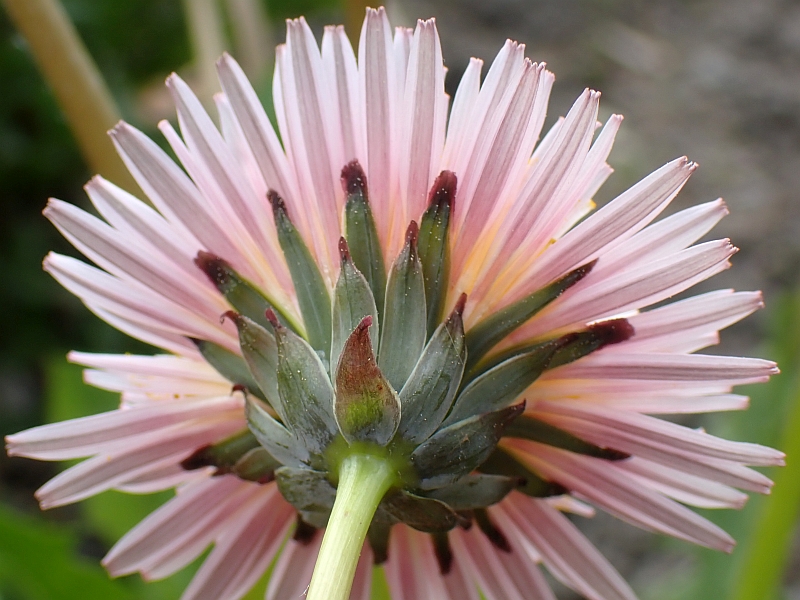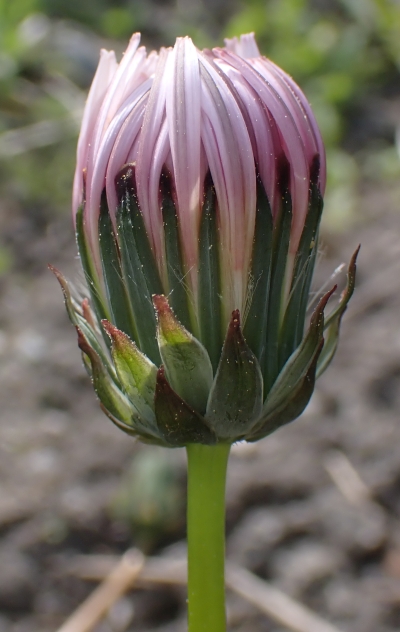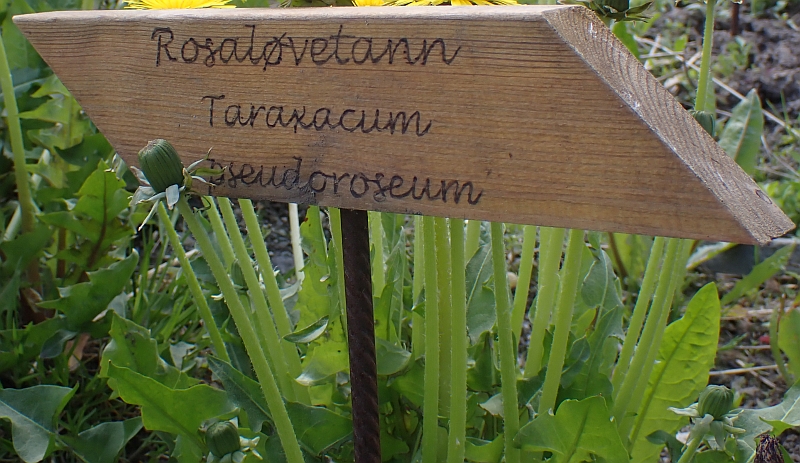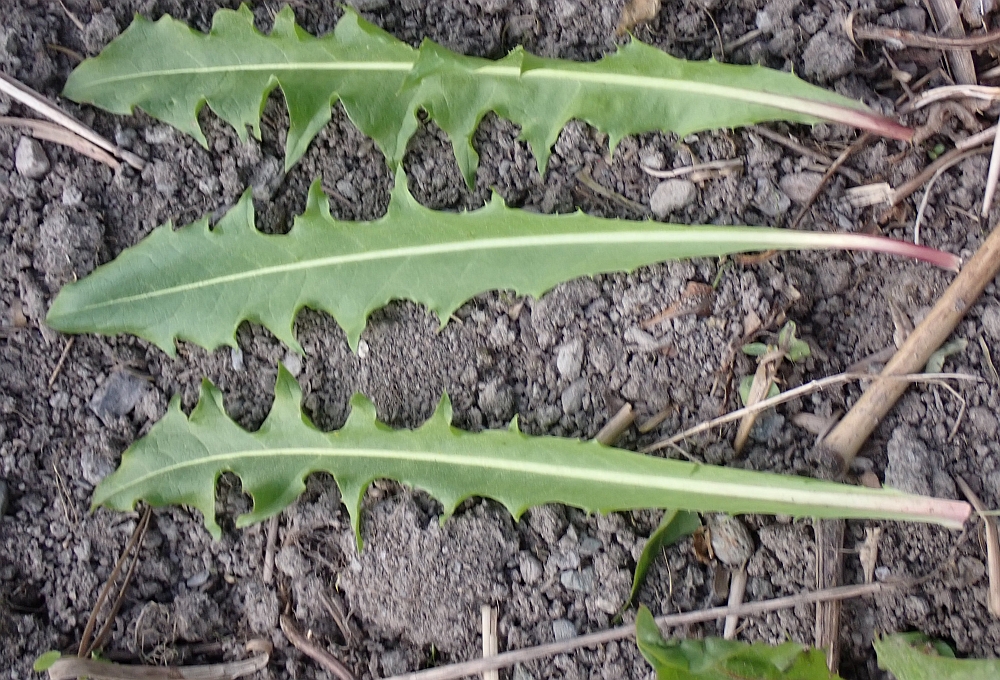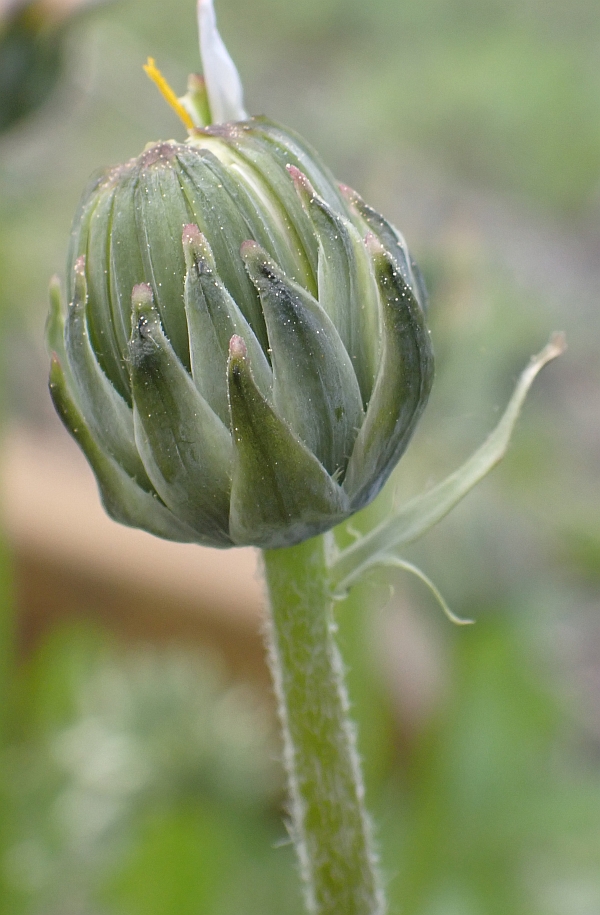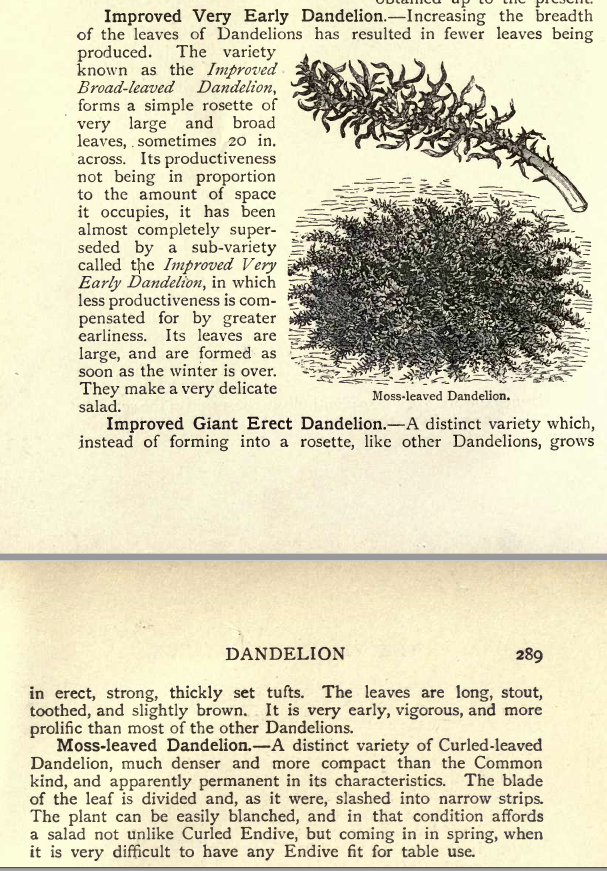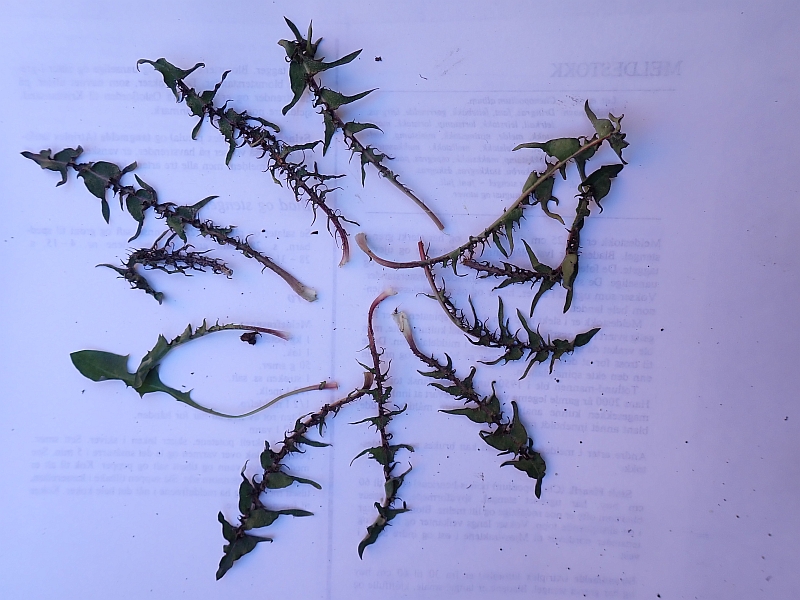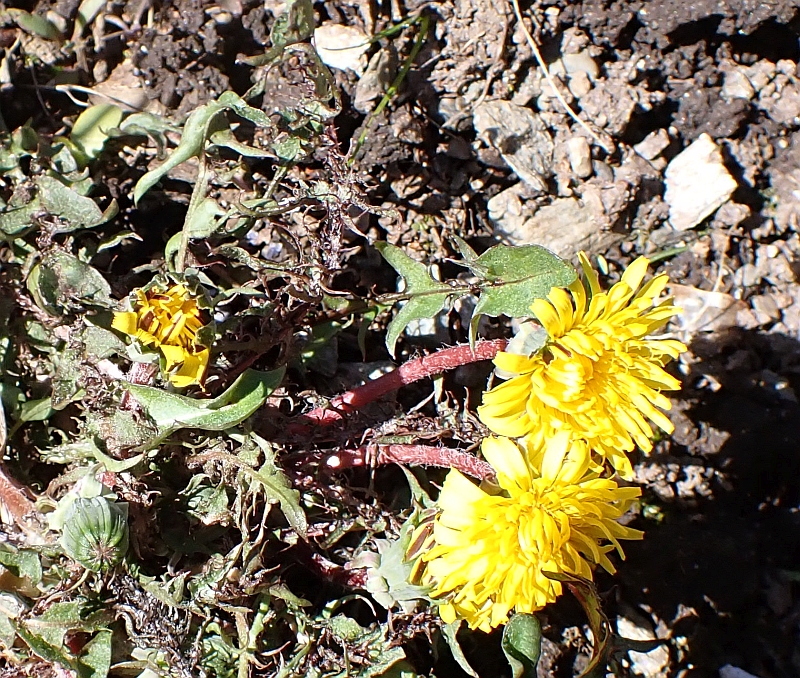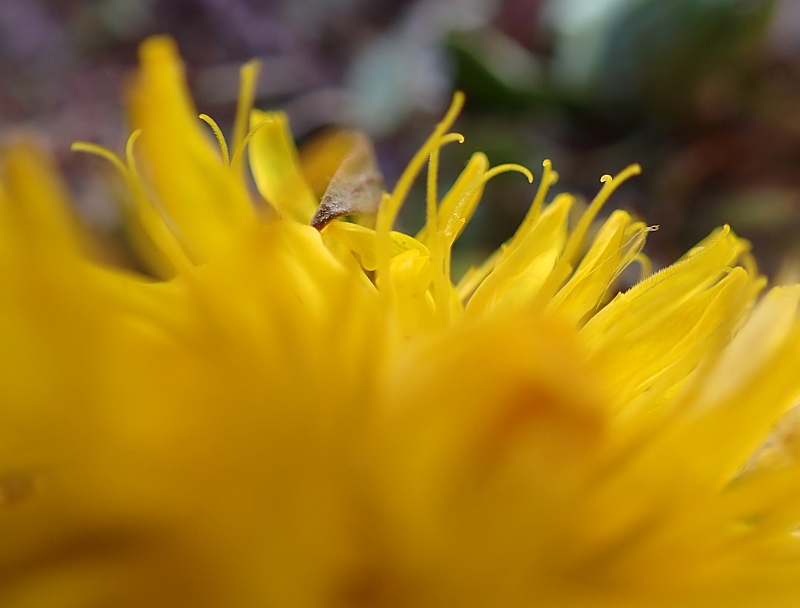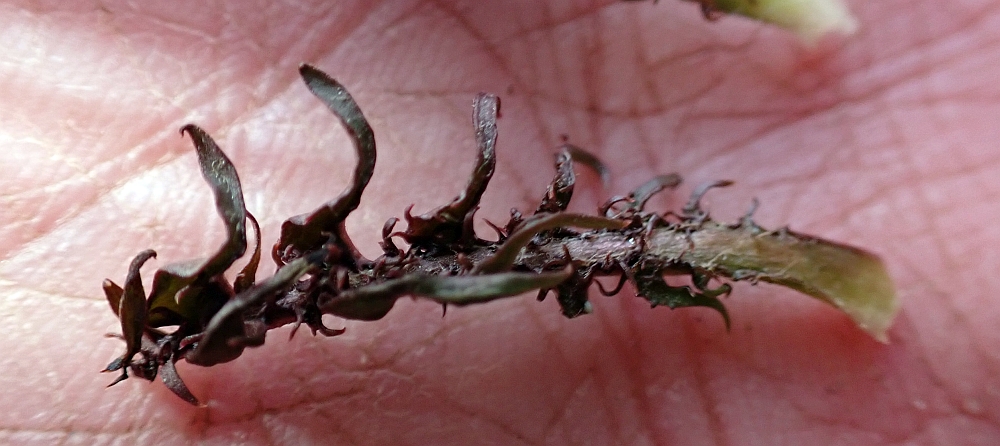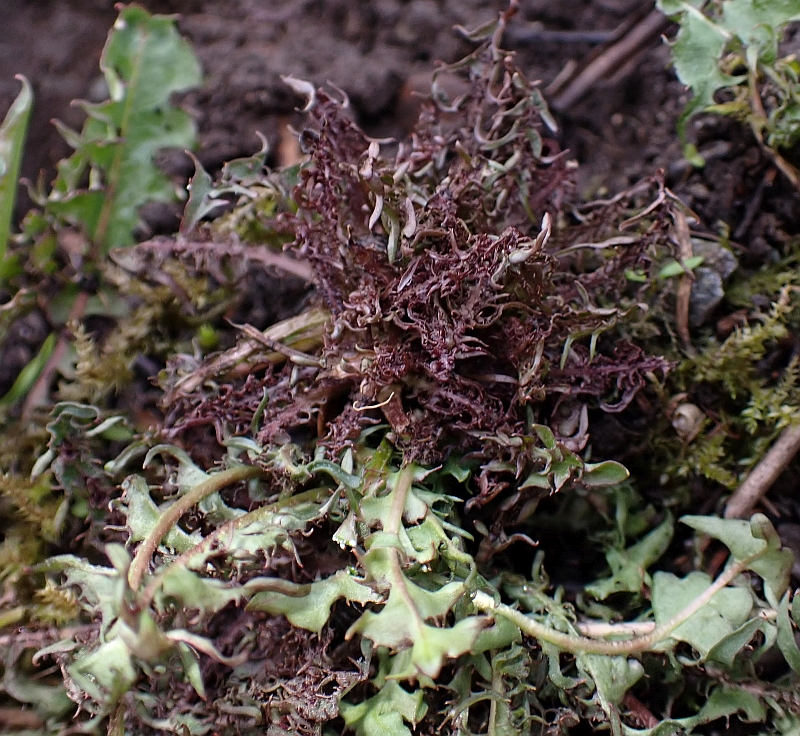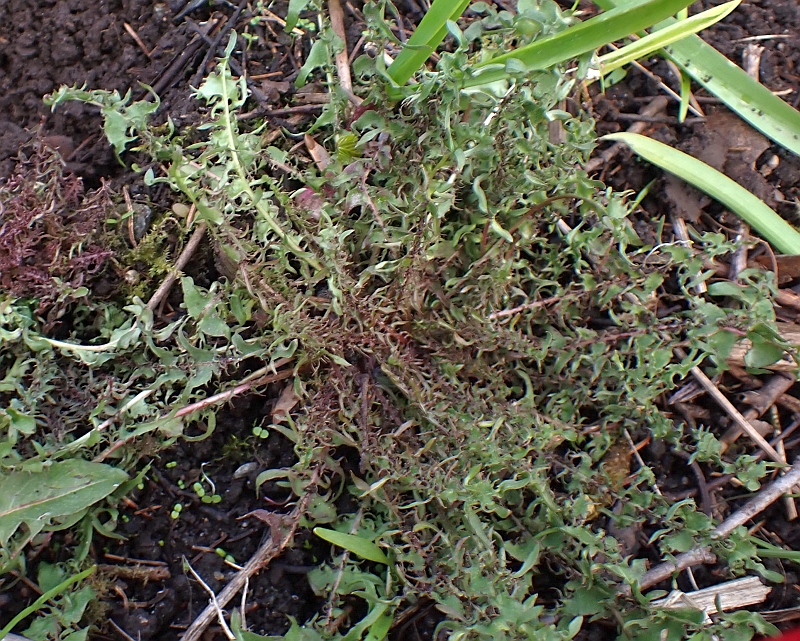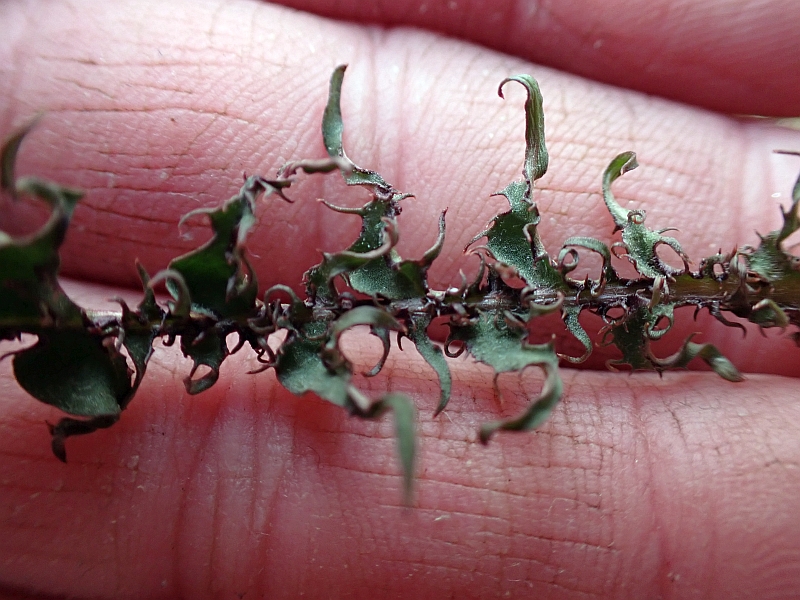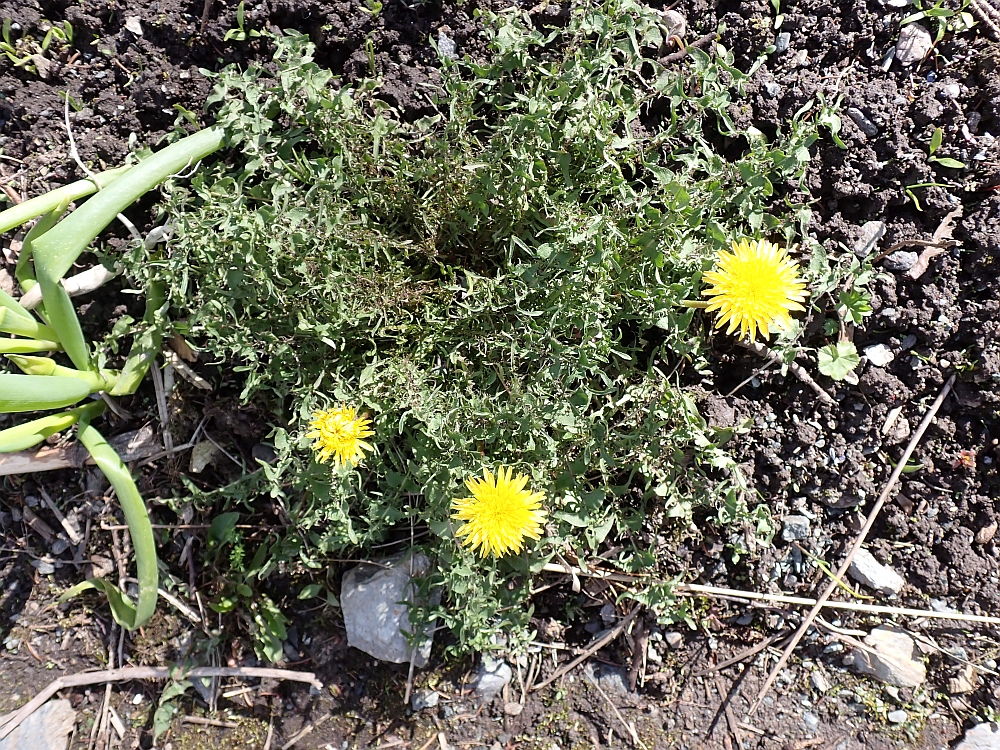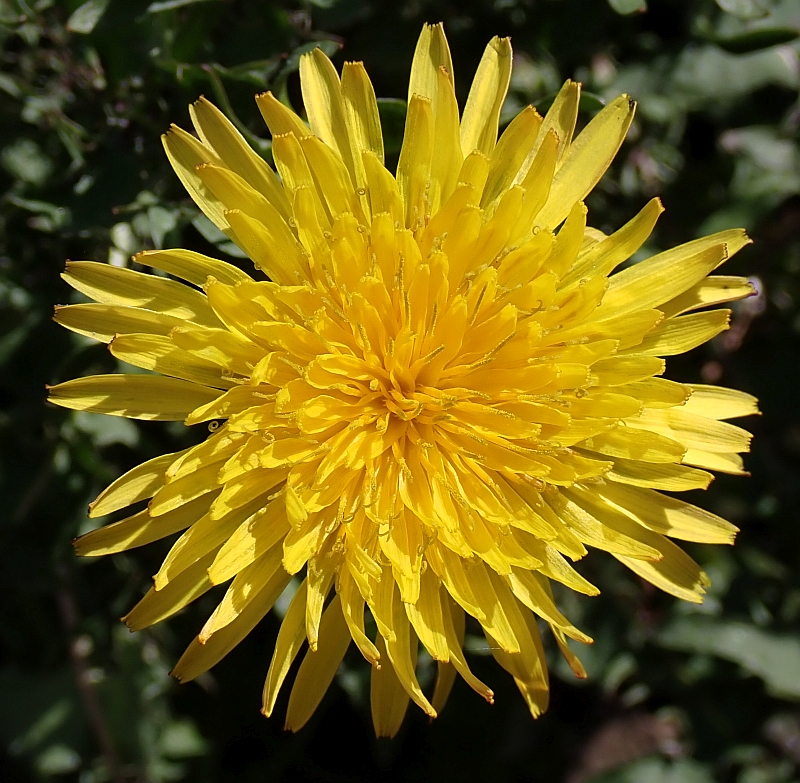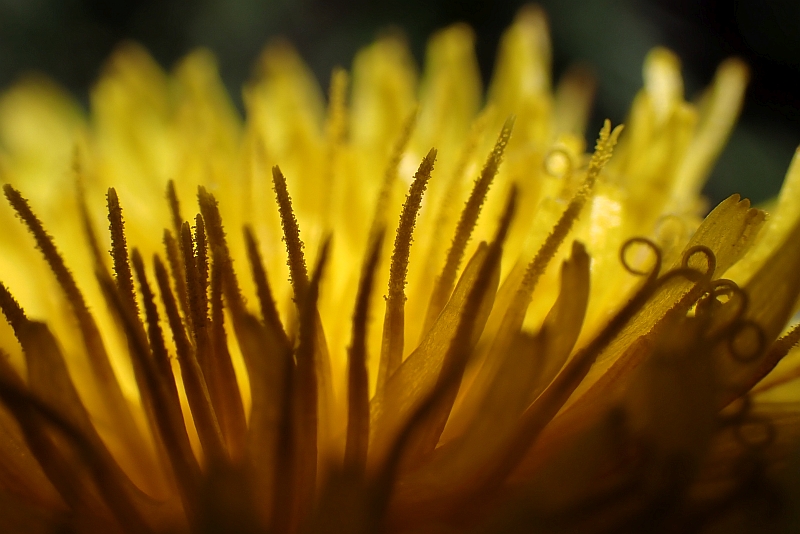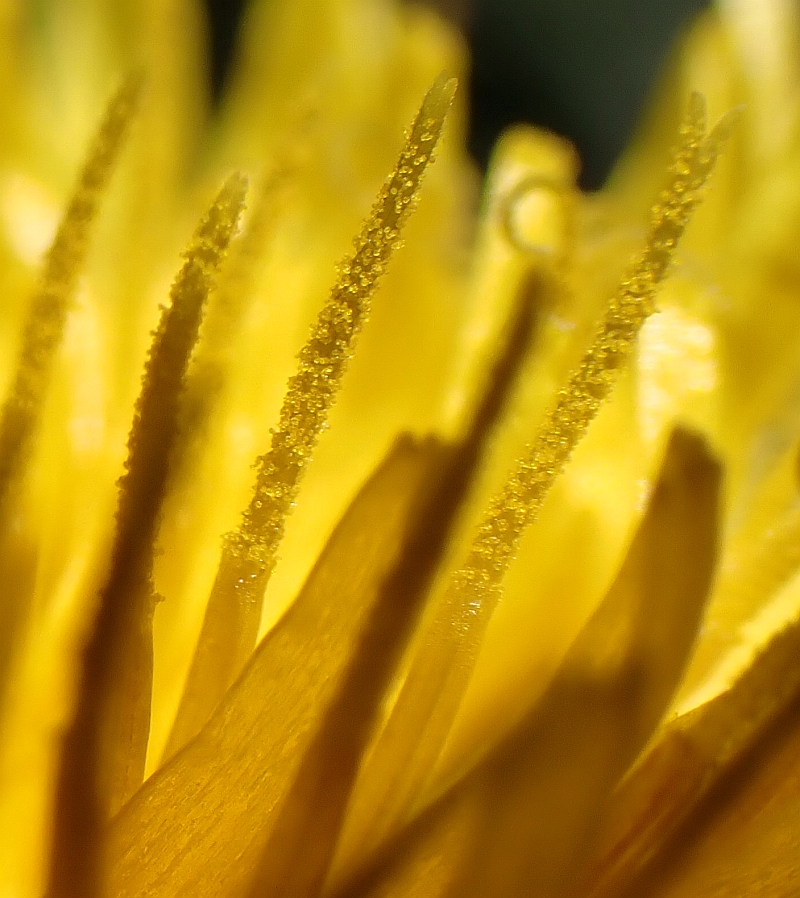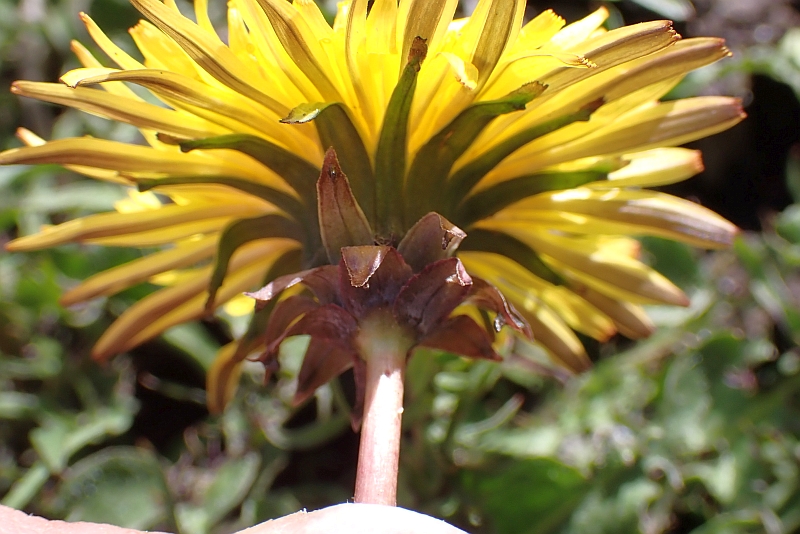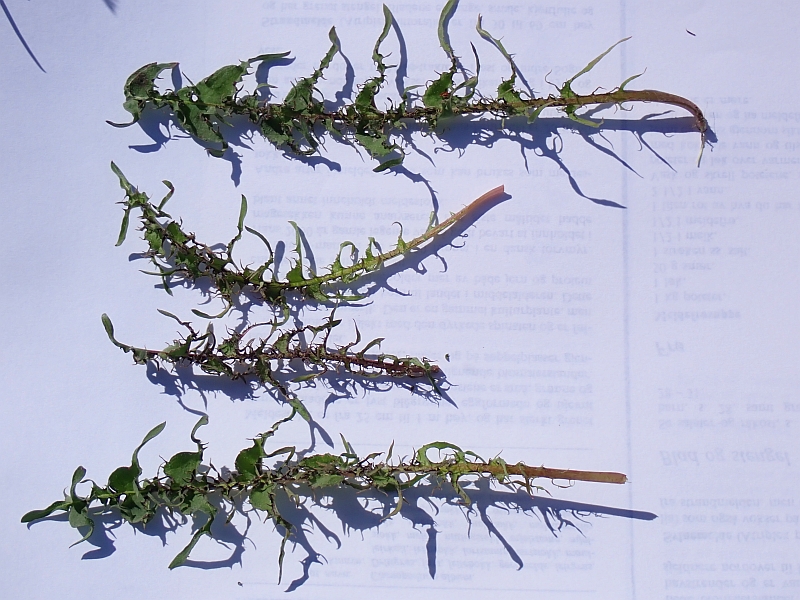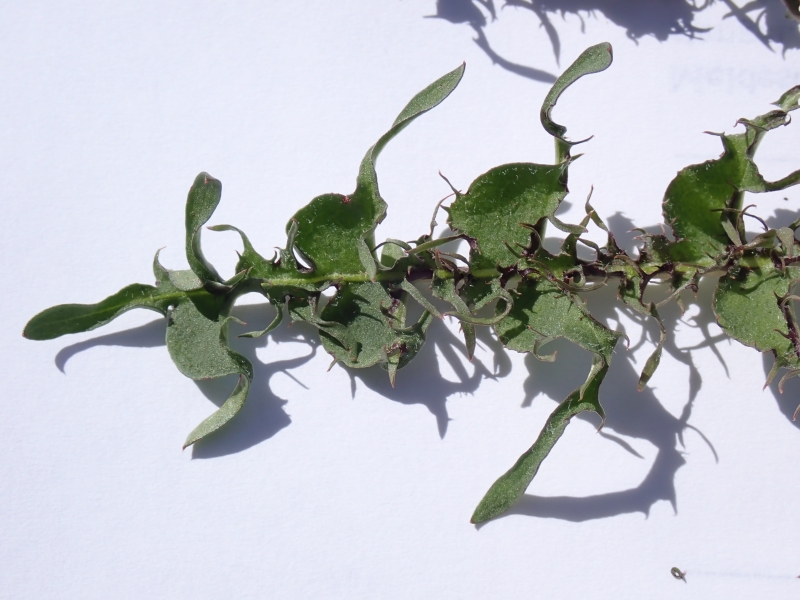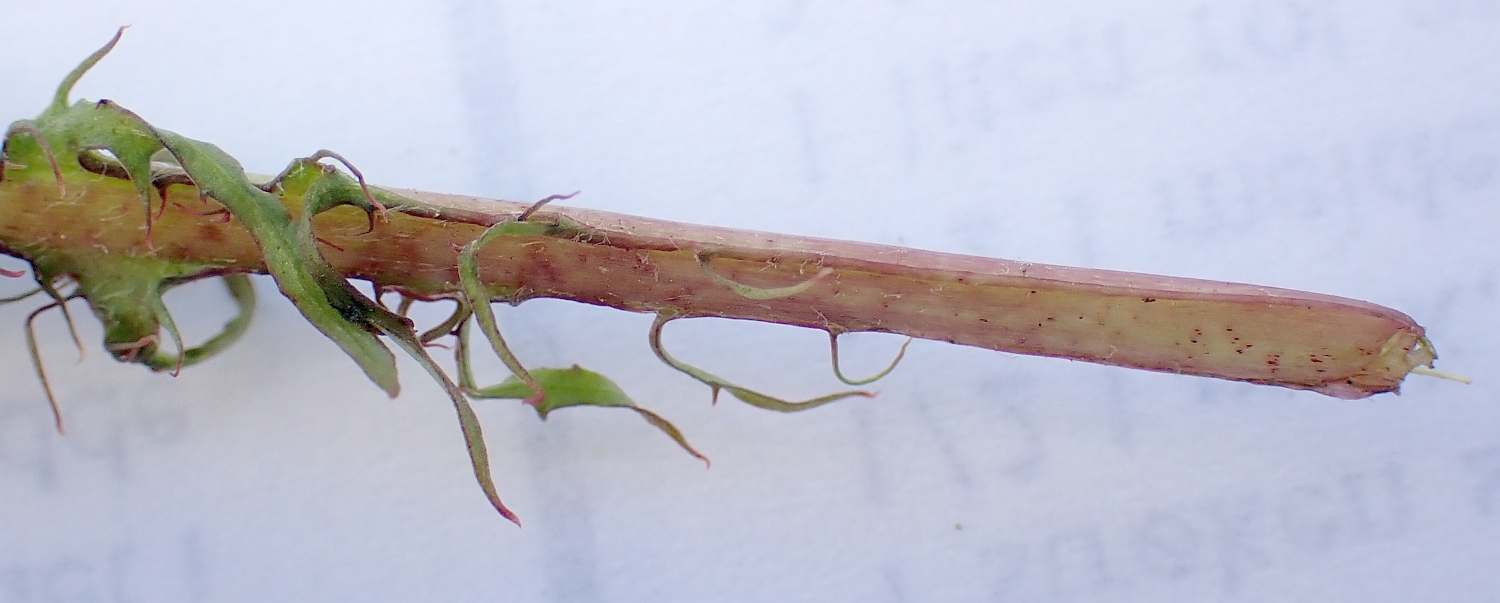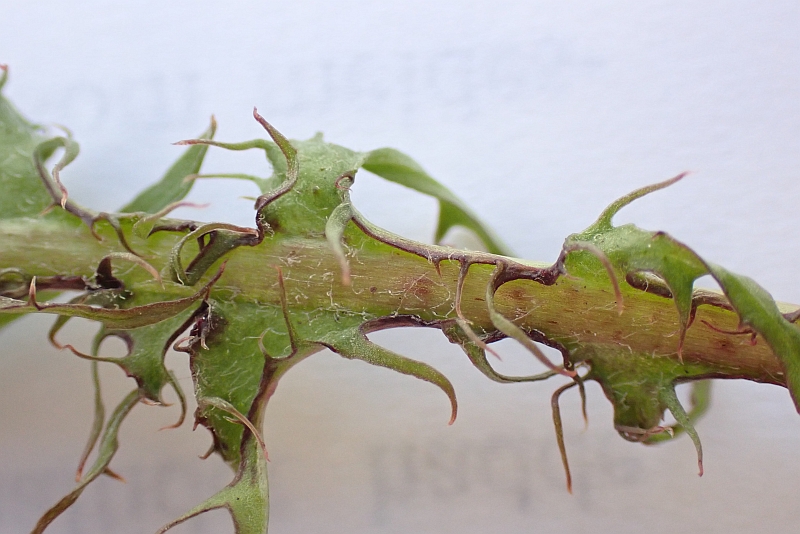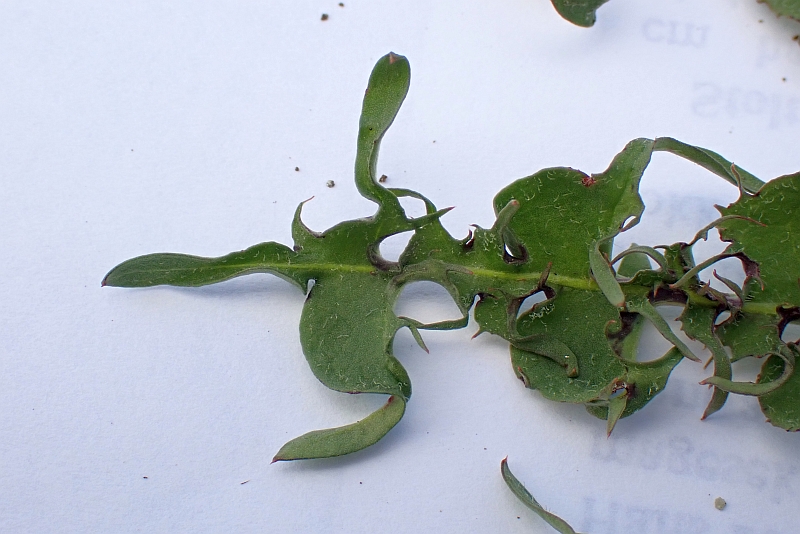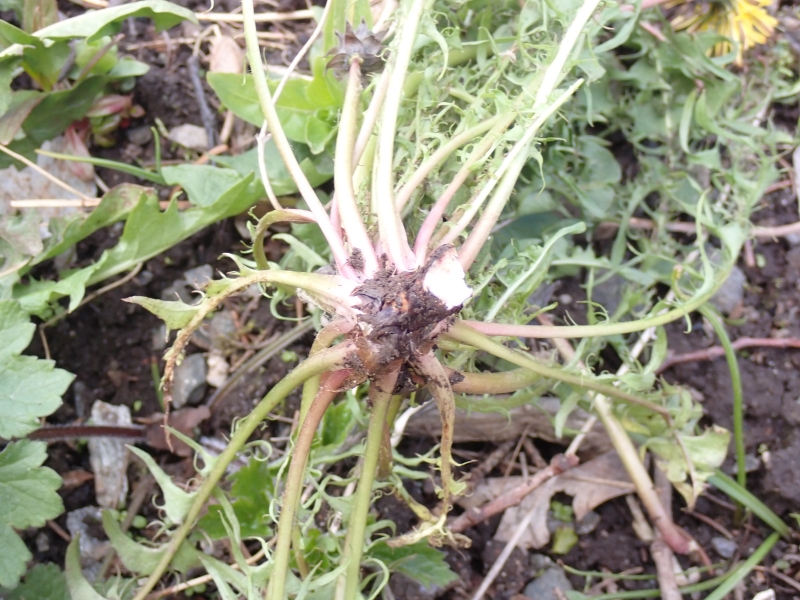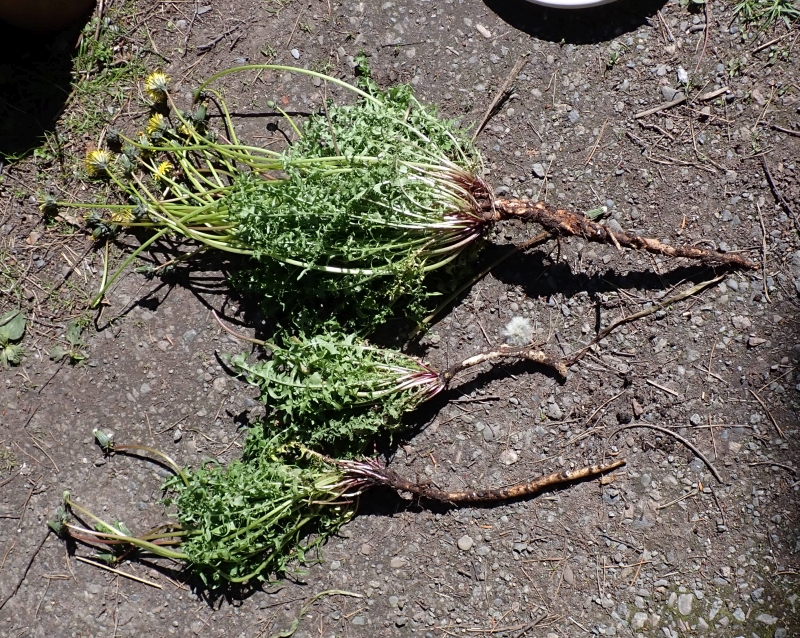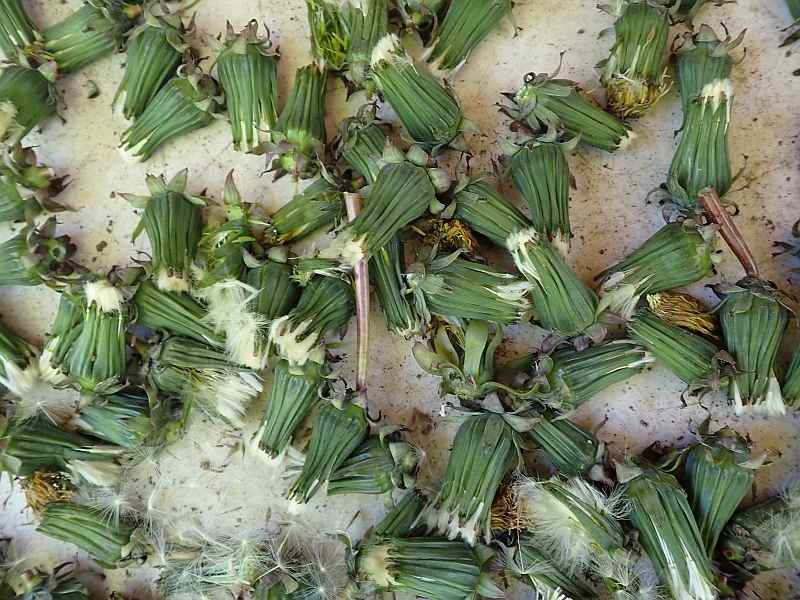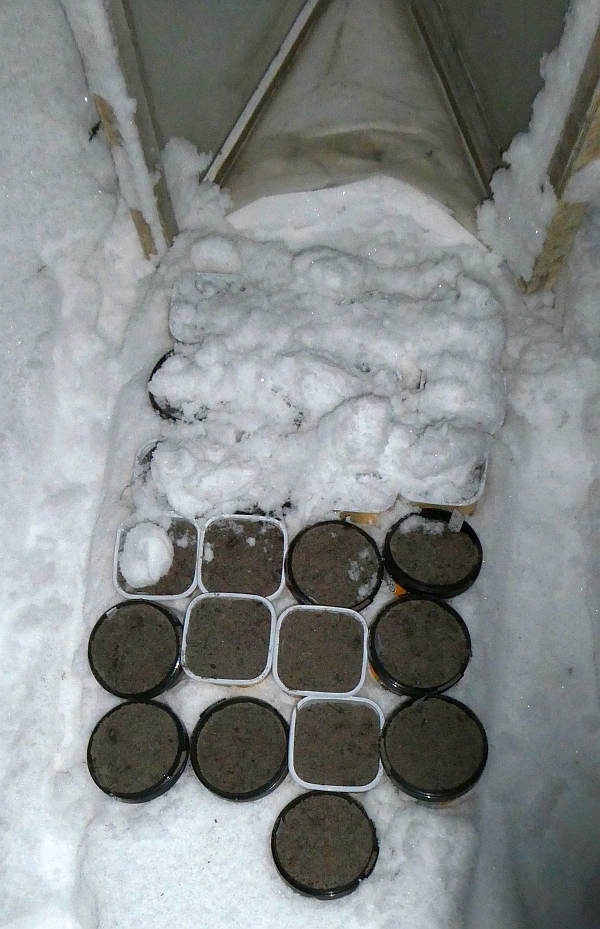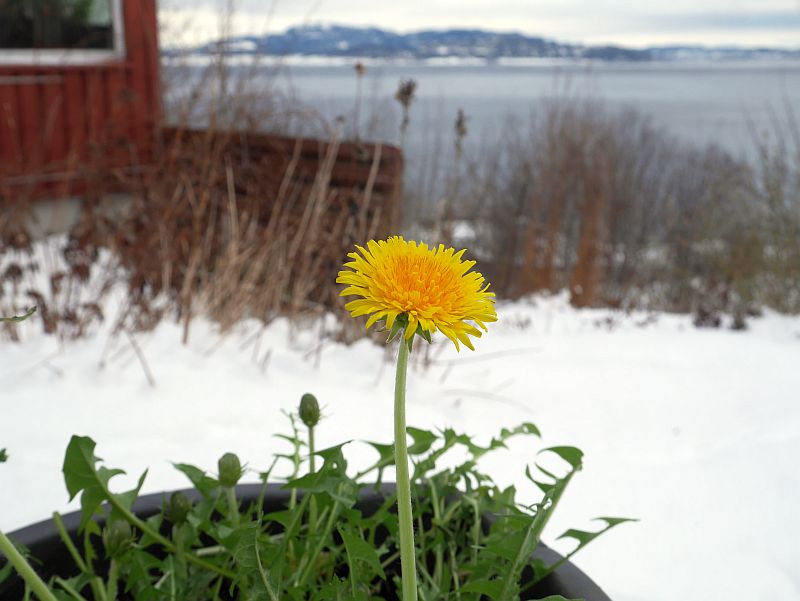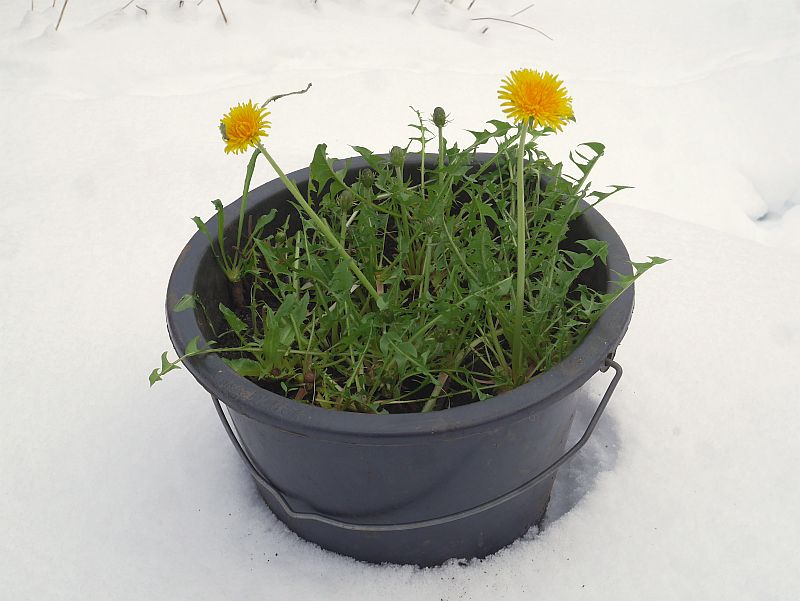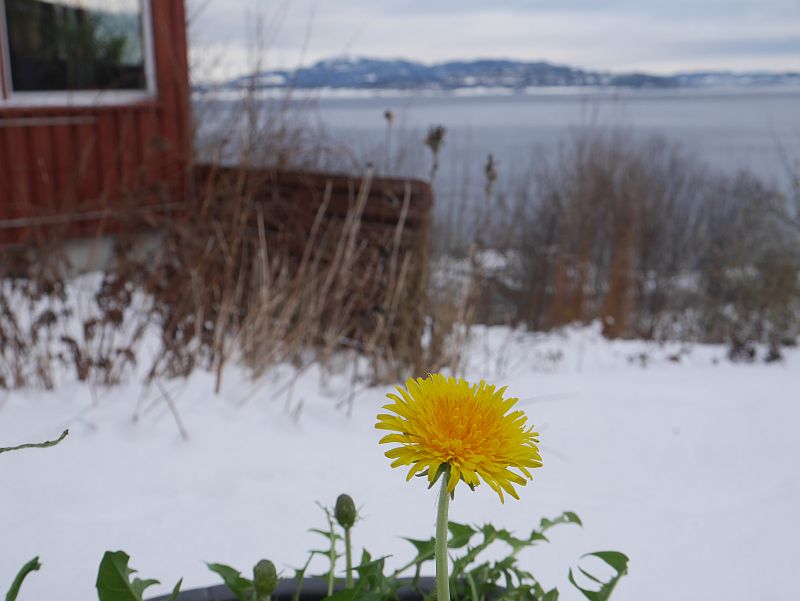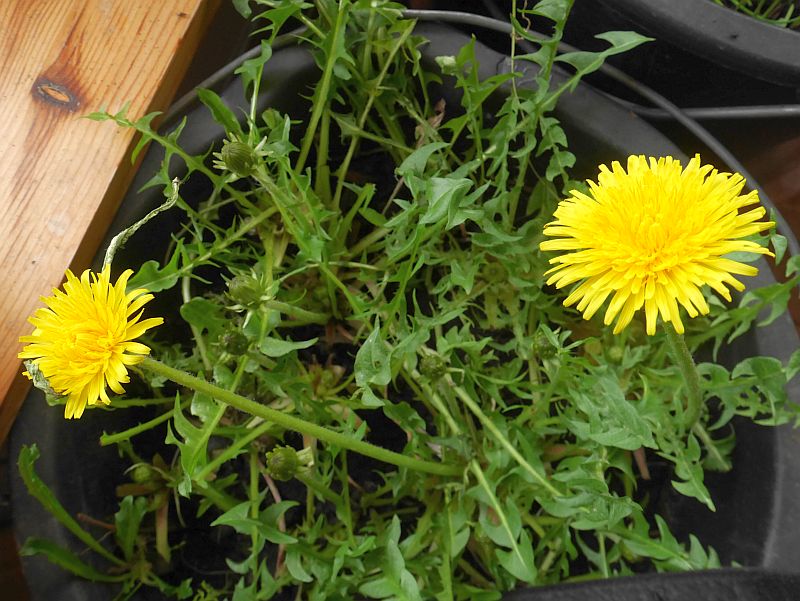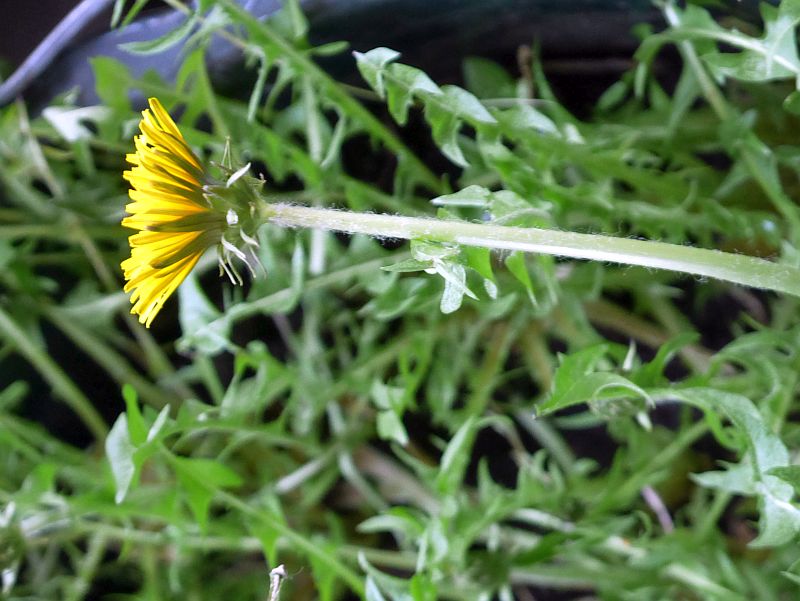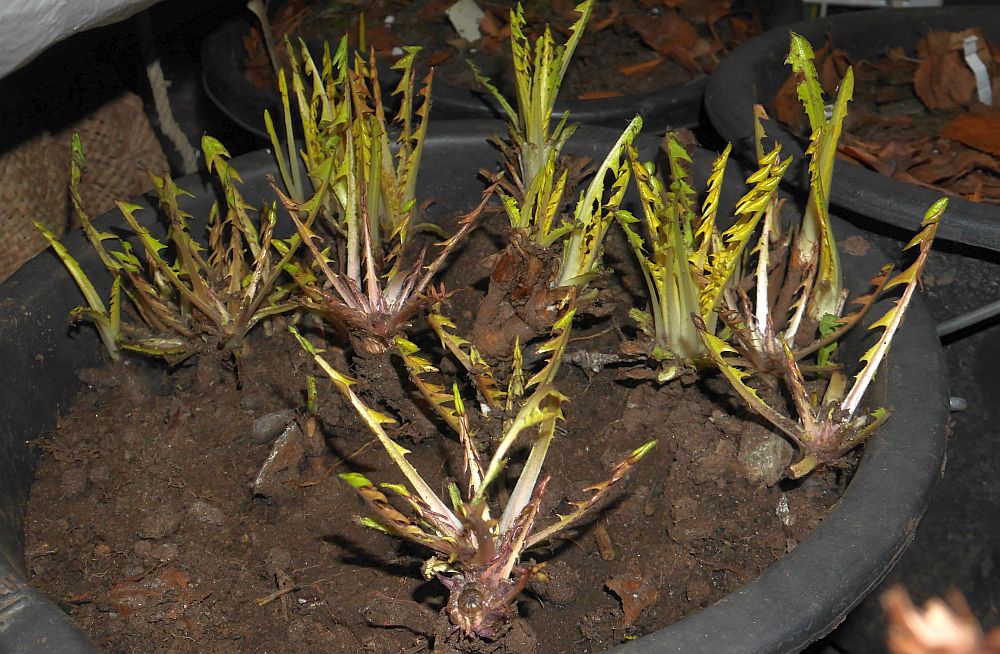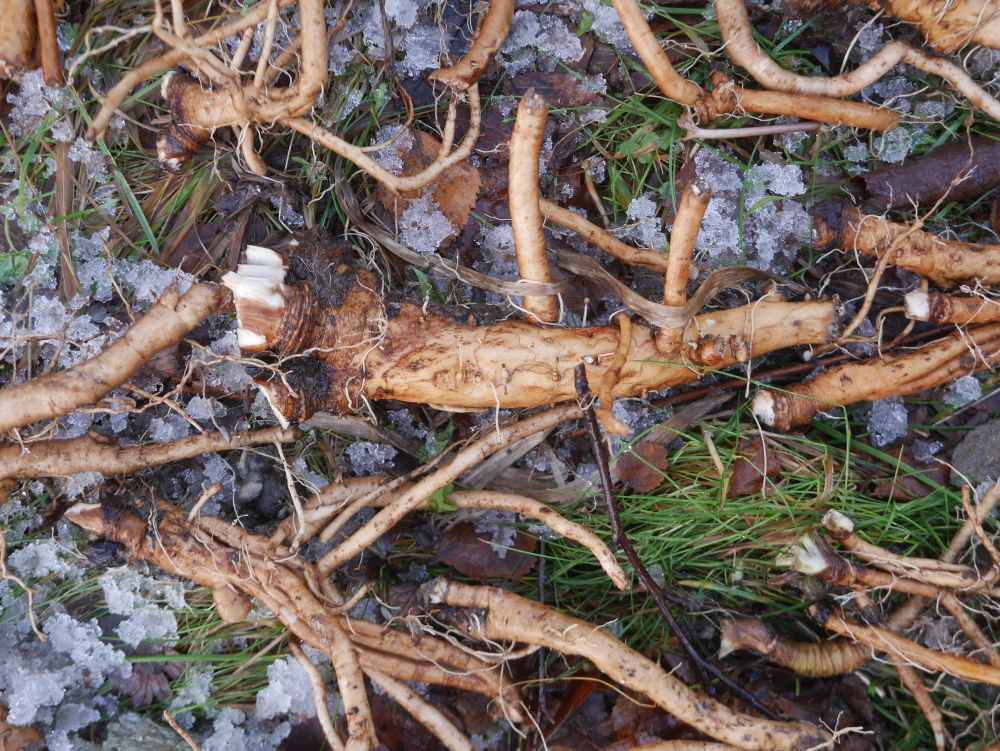I’ve changed full circle from the days when I fought against the dandelions to nowadays actively encouraging them in my perennial beds as they will be my most important veg all winter when we eat them every day (digging the roots for forcing like chicory before the first hard frosts). They fill all the gaps between my perennial edibles on the beds in the video and provide food for a range of insects and birds (directly feeding on the seeds and indirectly picking off the insects). At the same time I’ve become a much happier person looking at the seed heads, representing hope rather than disASTER (get it? Dandelions are in the Asteraceae)!
Category Archives: Dandelions
Dandelions in pink, white and yellow
16th May 2024: Dandelions in white, pink and (self-sowed) yellow in the Asian part of the World Garden at the Væres Venner Community Garden in Trondheim. I planted both Taraxacum albidum, Taraxacum leucanthum and Taraxacum pseudoroseum in this part of the garden and suspect these are albidum and pseudoroseum but am not sure. Will post separate albums below showing detailed studies of the pink and white one in case anyone has a key to these (there are several white flowered dandelion species in Asia).
Botanical details of what I’m growing as Taraxacum pseudoroseum in the World Garden at the Væres Venner community garden in Trondheim:
Botanical details of what I’m growing as Taraxacum albidum in the World Garden at the Væres Venner community garden in Trondheim. Anyone have a key to this species?
Dandelion scape, bud and flower omelette
Sorry, but I ceremoniously sacrificed all the dandelion flowers, buds and scapes for a delicious omelette today…and what a wonderful view they had on their last day on earth!
Also in the dandeliomelette was chicory “Witloof” sprouts, an old Finnish shallot, garlic, thyme and the last of the wild buckwheat sprouts (løvetann, sikori,sjalott, hvitløk, timian og vill bokhvete)

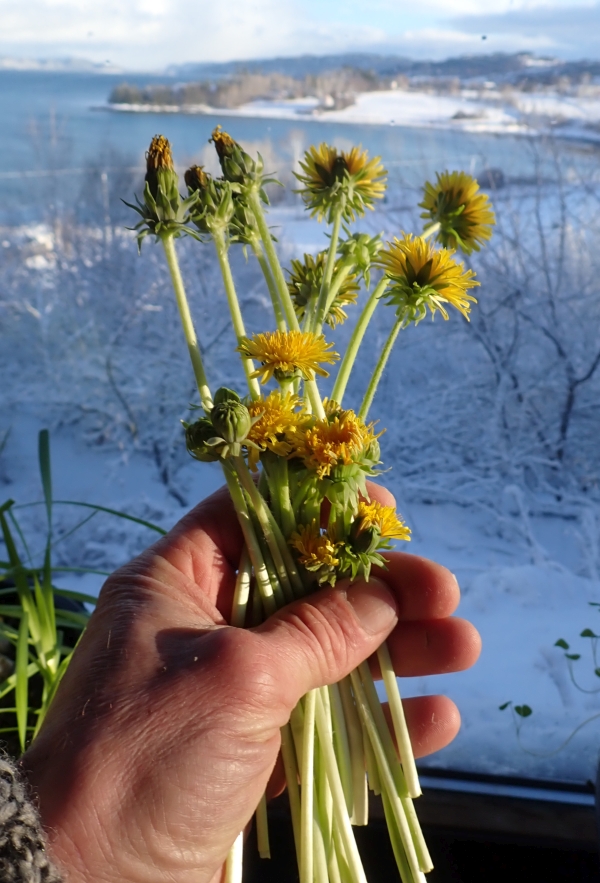

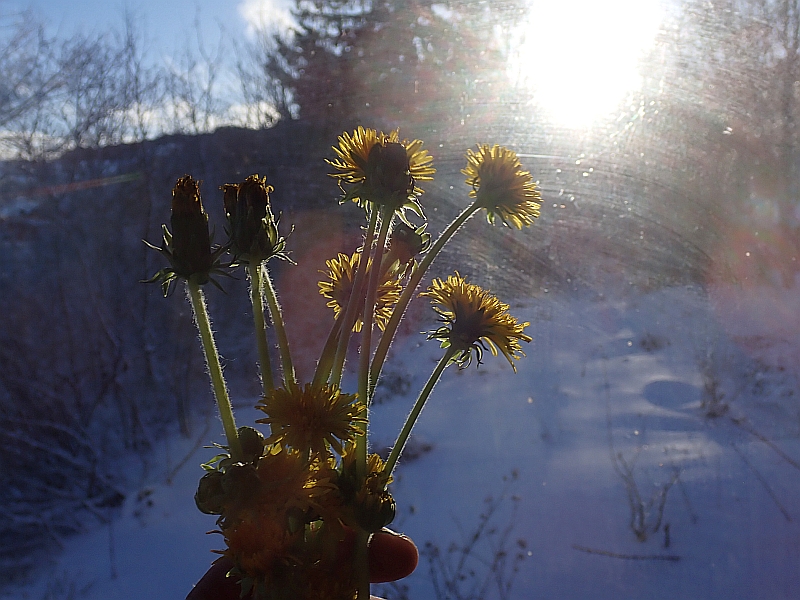


Freedom for Palestine
The year’s first seed is as usual dandelion (løvetann), but this one is extra early as it was one of those forced indoors for the leaves.
The dandelion symbolises freedom and this seed head is ironically growing next to a wild food plant of the Palestinians, Cyclamen persicum on my windowsill (the leaves are cooked with rice and meat, or raw as salad according to a paper Alishtayeh, 2008: Traditional knowledge of wild edible plants used in Palestine; I haven’t tried yet).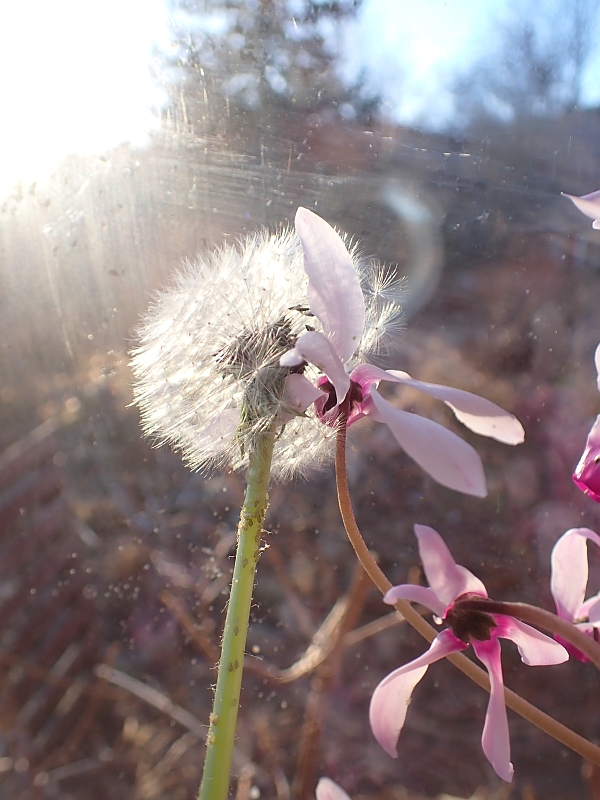
Doug Clifford eats dandelion
A curiosity in an occasional series “The famous eat dandelions”: From the documentary Creedence at the Royal Albert Hall where they played in 1970, drummer Doug Clifford asks the cameraman if he’s eaten a dandelion and proceeds to eat a flower :)
Moss-leaved dandelion = Taraxacum tortilobum
I’ve been trying to find out what species the legendary moss-leaved dandelion (as featured in my book) and some other cultivated varieties actually are. I took the series of detailed pictures below of this plant last spring and posted them on the Dandelions of Britain and Ireland group (there are several experts of Taraxacum there including author of the Field Handbook to British and Irish Dandelions, John Richards)
Dutch expert Karst Meijer has ID’d the plant as Taraxacum tortilobum. We cannot be 100% sure that this is the original plant depicted in the Vegetable Garden (1920), but it makes sense that it was a wild plant that was domesticated as dandelion breeding is difficult as they are largely apomictic. T. tortilobum is found in the wild in northern France, which strengthens the theory that this is the plant. See https://www.gbif.org/species/5394131 where it is known as the twisted-lobed Dandelion.
The plant I grow which is the only line claiming to be the moss-leaved dandelion originated from IPK Gatersleben (German genebank) as Taraxacum sublacionosum “Delikatess” which it isn’t!
Start of the 2023 Dandelion season
The first wave of dandelions ready for 2023! We will use them with lunch every day for the rest of the winter!


Geeking out with Dandelions
Earlier this year I bought the Field Handbook to British and Irish Dandelions by A.J. Richard which contains descriptions, photos and keys for all 239 known UK and Irish species, a book written during Covid lockdown! I was curious to go deeper into the world of dandelions and to hopefully identify the various species I have in my garden and area around apart from the obvious moss-leaved dandelion (is this really Taraxacum sublaciniosum?), the pink flowered dandelion (Taraxacum pseudoroseum) and white-flowered species like Taraxacum albidum. And what about some of the historical cultivars such as the French cultivar “Pissenlit Coeur Plein Ameliore”. What species is this?
Inspired by the book, I set about taking detailed photographs of about 40 different dandelions at home and at the Væres Venner community garden with the thought to have a proper look and try to key them out during the winter months. I did try one species but it was daunting and they may not be species found in the UK. I have introduced quite a few cultivated and wild Taraxacum species in the garden over the years. I also joined a couple of specialist Taraxacum groups on FB. There I met Alex Prendergast in Norwich who kindly sent me seed of 25 mostly identified species! Having the answer for species that I could grow and have before me should hopefully help me keying out some of my species! I finally got round to sowing these dandelions today; see the album below. At the very bottom are detailed pictures for one species, the moss-leaved dandelion, which I’ve learned are necessary for dandelion identification.

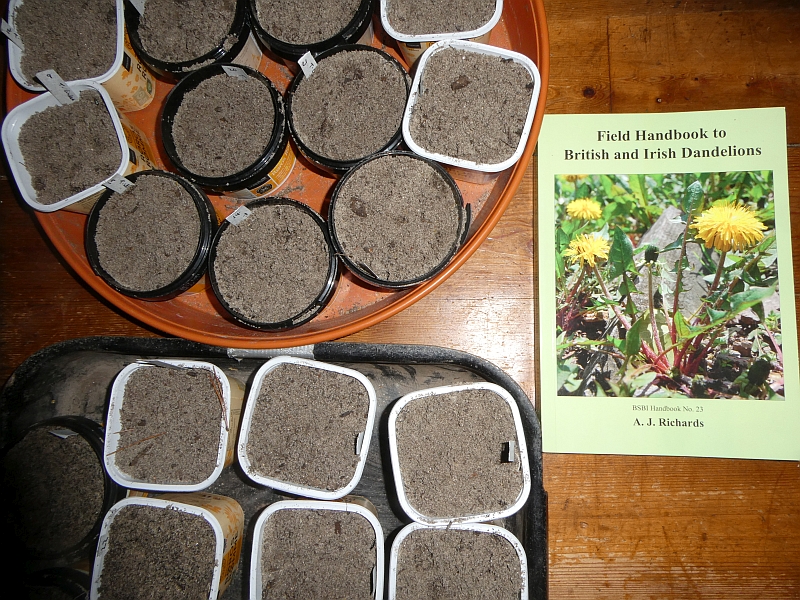 Detailed photos of the moss-leaved dandelion, so far known as Taraxacum sublaciniosum
Detailed photos of the moss-leaved dandelion, so far known as Taraxacum sublaciniosum
“Delikatess”:
Dissected dandelion bud
We’ve been eating dandelions for lunch every day now for almost 3 months from the roots dug in the autumn and there’s still loads (see my post in January and February here: https://www.edimentals.com/blog/?p=27183 and https://www.edimentals.com/blog/?p=27343). We basically cut at the base with scissors and yesterday accidentally dissected a flower bud! The dandelions will respond with new leaf and flower shoots.  Forcing pots of dandelions and other perennial vegetables in the living room; ease of access in what permaculturists call Zone 0
Forcing pots of dandelions and other perennial vegetables in the living room; ease of access in what permaculturists call Zone 0
 Dissected dandelion flower bud
Dissected dandelion flower bud
Macrogreens and the first Dandelion Flowers
MACROGREENS
I harvested dandelion roots in November and stored them in the cellar until mid-January when we moved it into the living room and the first leaves were harvested just a few days later: https://www.edimentals.com/blog/?p=27183
Since then, we’ve been eating a few leaves for lunch every day.
A few days ago, the first flowers appeared and I took my pet dande-lion for a walk in the garden.
In the cellar, even though it’s only +3C they’ve also been sprouting…




